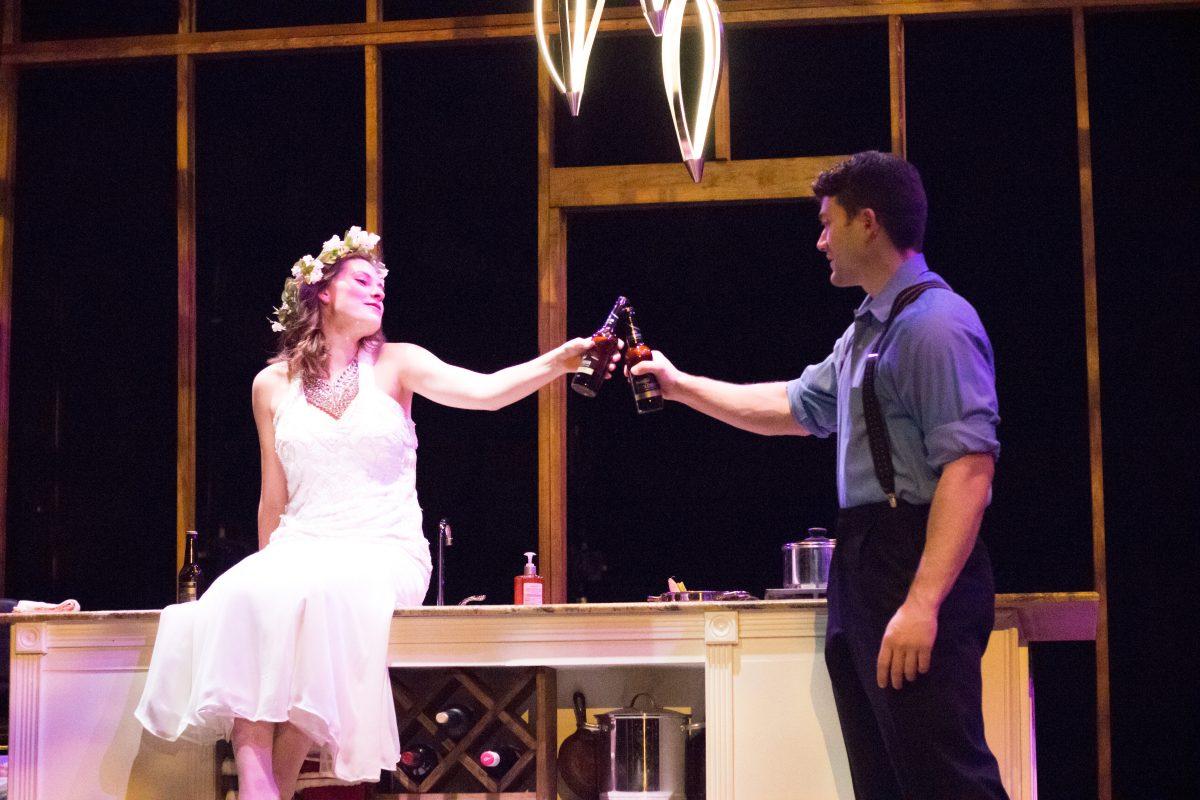Love, sex and power all trapped inside a cage — this is perhaps the simplest way to capture the essence of “Miss Julie,” a play masterfully brought to life on stage by UTD’s own.
UTD Director Thomas Riccio adapted “Miss Julie” to present a contemporary take on the production.
The lead role of Miss Julie, the daughter of a social aristocrat, is played by arts and performance freshman Alexandra Schmid. Marketing junior Trent Lintzen plays Jean, a self-centered, egotistical valet. Speech and language pathology sophomore Lauren Massey plays Kristine, a cook who also works in Julie’s household. These three characters manage to intrigue the audience for the entirety of the 90-minute performance.
The reason this play is so attractive is because it expresses our daily struggles, both internal and external. Struggling to express ourselves as young people in a world led by the previous generations can be difficult, especially when hindered by the societal rules set by the latter.
Riccio presents a unique stage setting by replacing the play’s original archaic elements with modern ones. Instead of utilizing carriages and vinyl, the set uses cars and iPads. Riccio’s move to use a modern set made the play all the more engaging to watch.
A modern kitchen centered within a wooden cage with dim lights created an ominous feel, piquing the audience’s interest. After all, it isn’t often that a play is engaging well before it starts.
The play is set in a wealthy area in the DFW Metroplex on the night of Midsummer’s Eve. The drama essentially tells a tale of a high-class woman who wishes to become one of the lower class in order to experience life without the restrictions of regal society.
In her attempt to do so, she is taken by the handsome valet, Jean, in a drunken state and loses her virginity. Jean, who is desperate to climb up the social ladder, uses this to his advantage.
Over the course of the play, the two characters go back and forth with one wanting to run away together and the other stating that it would be a bad idea and vice versa. While this is what creates much of the plot, it is also the most apparent drawback in the drama. It would have been more engaging if the repetitiveness of the arguments between Jean and Miss Julie were trimmed.
A younger audience can connect with the story line because the theme of trying to break free of societal expectations is applicable to our generation.
To add to the existing dramatic element of the contemporary version of Miss Julie, various other aspects such as lighting, music and sound were well-coordinated by the tech crew, which amplified the plot. The lighting and sound were nearly in tandem for most of the drama, creating different effects throughout the play.
The lighting was always focused on the kitchen set, whereas other areas of the stage were dark or dimly lit to emphasize the action in the kitchen. It seemed clear that the set blocking was planned so that the cage had large openings to allow the audience to see through any obstructions.
The play is in one sense, a bit of a melodrama. In another sense, all three actors realistically portray it. The passion of the characters and the physical interactions between them created an intense effect that made the storyline more alluring.
Much of the play focused on the theme of duality, such as love versus hate, male versus female and sexuality versus sensuality. The plot focuses on the dynamic of duality which gives rise to controversy. This is the ultimate source of conflict within the drama, enveloping aspects such as class difference, power struggles and the economic gap between the various social hierarchies.
It is almost as if the social issues of today were transformed, given personas and acted out in “Miss Julie,” which makes it all the more interesting. In addition, Schmid and Lintzen, along with Massey work together to bring to life the characters of Miss Julie, Jean and Kristine.













